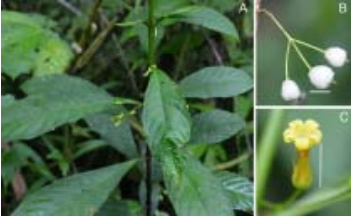
VOLUME 64 : 2016
VOLUME 64 : 2016
ACTA MANILANA publishes research and innovation in the different branches of the natural and applied sciences. It reports significant development in the discipline, and novel applications, unconfined by the traditional coverage of the disciplines.
Molecular confirmation and taxonomy of the Rubiaceous Mycetia apoensis (Elmer) Govaerts
Page 1-7
John Christopher C. Villanueva, Remigio S. Callanta Jr., Jasmin Aei F. Neptuno, Maryneil A. Verin, Porferio S. Bangcaya, Vincent Louie D. Cabelin, & Grecebio Jonathan D. Alejandro
ARTICLE DOI: https://doi.org/10.53603/actamanil.64.2016.hviz7762

Graphical Abstract
Abstract
The little known endemic Philippine Rubiaceae Adenosacme apoensis Elmer was transferred to the genus Mycetia Reinw. based on herbarium specimens. Also, Mycetia apoensis was once thought as conspecific with M. cauliflora. To date, M. apoensis lacks comprehensive vegetative and reproductive descriptions to fully understand the species and be able to delineate from other members of Mycetia. To verify the generic affiliation of the species with more certitude, two chloroplast markers (rps16 intron and trnL-F region) were sequenced from the recent collections at Mt. Apo, Davao. Bayesian analysis of the combined plastid (rps16 and trnL-F) dataset strongly supported (PP = 1.0) the inclusion of M. apoensis in the genus Mycetia and resolved M. cauliflora as its sister-taxa. A comprehensive description and botanical illustrations of M. apoensis as well as its conservation status based on IUCN criteria are here provided.
Keywords: Adenosacme, Mycetia, cpDNA, rps16, trnL-F, Philippine endemic, conservation
FOLLOW US
-
Research Center for the Natural and Applied Sciences
Thomas Aquinas Research Complex Building
University of Santo Tomas España, 1015 Manila, Philippines -
TL: (+63 2) 3406-1611 local 4037
DL: (+63 2) 8731-4031 - actamanilana@ust.edu.ph

© 2021 University of Santo Tomas, Acta Manilana. All rights reserved
Powered by: Communications Bureau